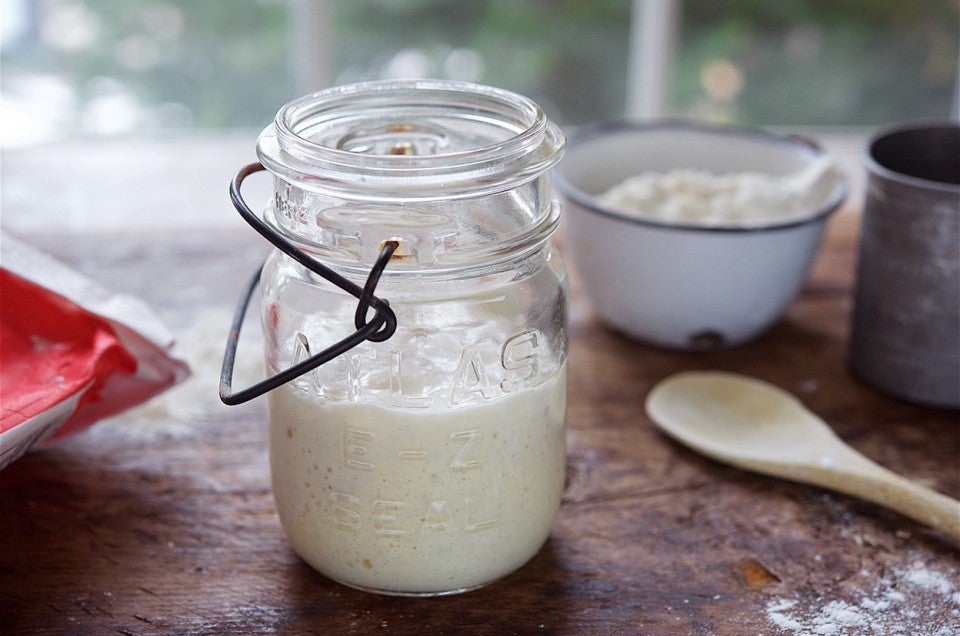
It s part of the bread making process known as a preferment. It is never frothy like the rye but it should be bubbly.

To read that word correctly think of it as pre ferment as in what happens before fermenting any preferment can leaven raise and flavor bread.
What does sourdough starter look like. What should the sourdough starter day by day look like. I took photos of my sourdough starter day by day. This is helpful to compare your starter to in order to make sure it is growing properly.
Here are daily sourdough starter photos for day 1 to day 6 so you know exactly what it should look like each day. What we call sourdough starter is a mixture of flour and water that naturally collects yeast and bacteria. It s part of the bread making process known as a preferment.
To read that word correctly think of it as pre ferment as in what happens before fermenting any preferment can leaven raise and flavor bread. The longer the starter has been dormant the more times it will need to be refreshed the process of pouring off half the starter and replacing it with new flour and water to reactivate. If your starter is ready to use a teaspoonful of the mixture should float in warm water.
The starter can now be used to make white sourdough bread. Active but not ripe sourdough starter the same starter at 1 p m 5 hours after feeding. It s beginning to expand and has many more bubbles.
If you watch it for a minute you can see the bubbles forming and coming to the surface in slow motion. Stir vigorously until combined. It might look like a sticky thick dough.
Scrape down the sides and loosely cover the container with cling film or with a clean kitchen towel secured with a rubber band i often just remove the rubber seal from the jar and just lay the lid back on top do not seal tightly. Well that s it for 24 hours. It smells great doesn t appear moldy but about every other day it has a small patch of solid starter floating on the top.
One might say it looks a bit like the stuff you scrape off the counter when you dribble your starter whilst spooning it out for measurement. Does that make sense. It is not pinkish or orange and does not smell bad in the least.
Look at the recipes overall amount of flour and water inclusive of the sourdough starter to understand the adjustment required. For example you will need more flour in your recipe if your starter is getting fed less flour and vice versa. After 12 24 hours it depends when it was last refreshed it may look bubblier.
Wheat sourdough starter 24 hours after new flour and water added. It is never frothy like the rye but it should be bubbly. However the bubbles do not necessarily indicate that the sourdough starter ready to use.
If you experience what looks like mold on your starter just carefully remove the pellicle and all the fungal growth you can. You should have a bit of unscathed sourdough starter underneath. Then using a clean utensil grab a small amount of untainted starter that wasn t near the mold and add it to a new jar.
A potato flake sourdough starter is made with dried instant potato flakes instead of flour. The process of making a sourdough starter includes the breaking down of the starch in dried potato flakes. This can take anywhere from 3 days to 2 weeks.
A sourdough starter can be kept for years as long as it s fed regularly and is allowed to breathe.